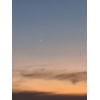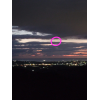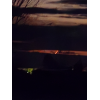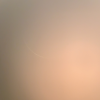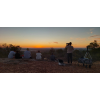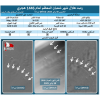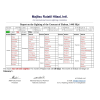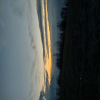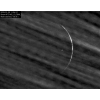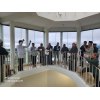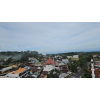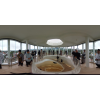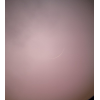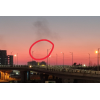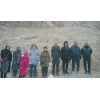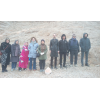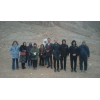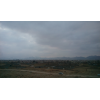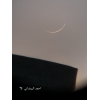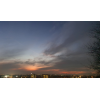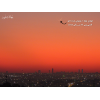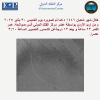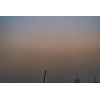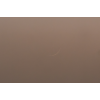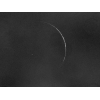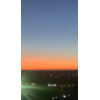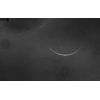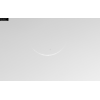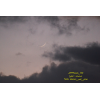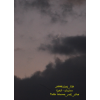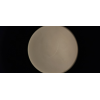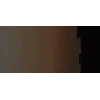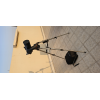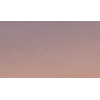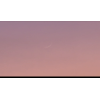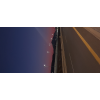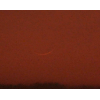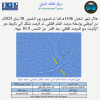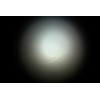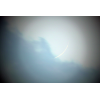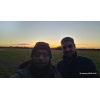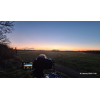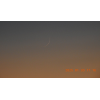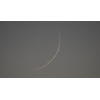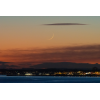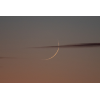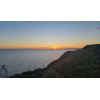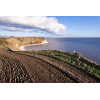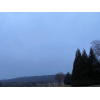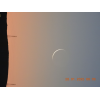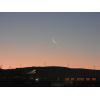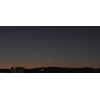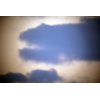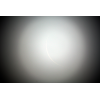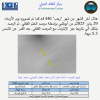Visibility of Sha'ban Crescent 1446 AH
- When to Observe Sha'ban Waxing (NEW) Crescent ?
- Sha'ban Waxing (NEW) Crescent Observation Results
- The OFFICIAL First Day in Different Countries
- When to Observe Rajab Waning (OLD) Crescent ?
- Rajab Waning (OLD) Crescent Observation Results
When to Observe Sha'ban Waxing (NEW) Crescent ?
The geocentric conjunction (Geocentric New Moon) will occur Inshalla on (Wednesday 29 January 2025) at 12:36 UT.
Sighting the new crescent on (Wednesday 29 January 2025) and (Thursday 30 January 2025) is shown in the below graphs using the program Accurate Times by Mohammad Odeh according to Odeh criterion. Where:-
- It is impossible to see the crescent from the areas located under the red color. Because either the Moon on this day sets before the Sunset and/or the topocentric conjunction occurs after the Sunset.
- The crescent is expected to be seen by optical aid only from the areas located under the blue color.
- The crescent is expected to be seen by optical aid from the areas located under the magenta color. In these areas the crescent could be seen by naked eye if the atmospheric conditions are superb and the observer is experienced.
- The crescent is expected to be easily visible by naked eye from the areas located under the green color.
- The crescent cannot be seen from uncolored areas, even though the Moon sets in these locations after the Sunset and the topocentric conjunction occurs before the Sunset, but the Moon is not sufficiently illuminated in order to be seen as crescent even by optical aid.
- Kindly notice that the below graph shows the possibility of seeing the crescent from areas between 60 degrees north of Equator down to 60 degrees south of Equator.
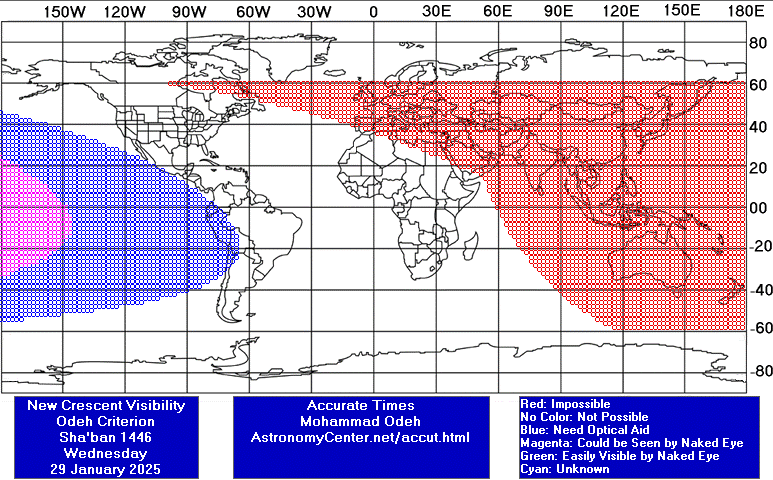
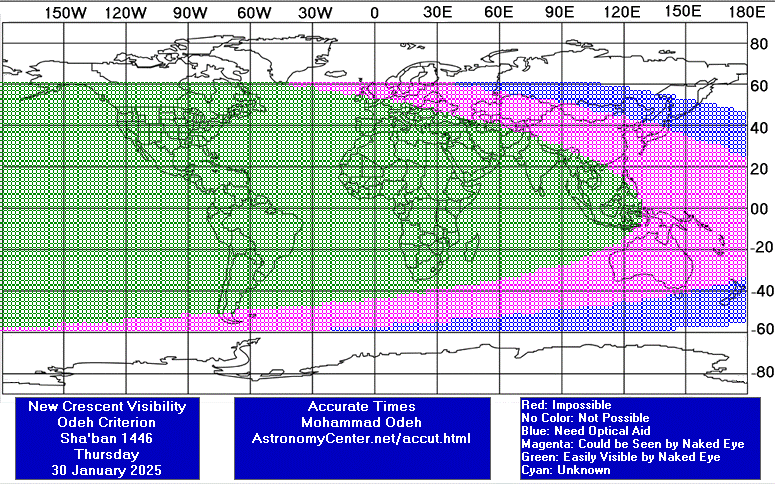
According to the Universal Hejric Calendar (UHC), which is based on the calculated crescent visibility, the start of this month in the Eastern Region will be on Friday 31 January 2025 and in the Western Region will be on Thursday 30 January 2025. Kindly notice that the UHC is a pre-calculated calendar, which adopts a certain criterion to start the new Hejric month. Your country/organization might adopt different criterion to start the new Hejric month. So it is highly advised to read the UHC website before giving any judgment.
- Results of seeing the crescent, and the first day of the month in different countries will be added here Inshalla as we receive the reports from ICOP's members. If you wish to be a member in ICOP, or to know more about it, kindly click here.
Sha'ban Waxing (NEW) Crescent Observation Results
Thu 30 January 2025
Albania
Mr. Ledjo Hyka said: " The Moon was sighted at four observation points in Albania and Kosovo, while at the other observation points it could not be seen due to numerous clouds. At the places where it was sighted, the Moon was visible for only 1 minute due to the numerous clouds that were constantly moving. It was wonderful! "
Australia
Mr. Arief Muslim said: "Assalamu'alaikum, Please find attached the moonsighting for the month of Sha'ban 1446AH that I captured from Perth, Australia. Date: Thursday, 30 Jan 2025 Location: Kalamunda Lion's Lookout, Perth, Western Australia. Long: 116, Lat: -32. Moon Age: +22H 43M, Illumination: 1.23%, Elongation: +12°:41', Relative Altitude: +10°:12' Orientation: [4 to 10 o'clock] Equipment: 4-inch binoculars (APM MS 34x100 ED) Result: Seen through the binoculars, not seen through naked eyes. The attached picture is taken through the binoculars using an iPhone XS Max Warm Regards, Arief"
Bahrain
Bangladesh
Mr. Mir Muhammad Ahsan Ali said: "بسم الله الرحمن الرحيم والصلاة والسلام على رسوله الكريم ﷺ والحمد لله رب العالمين. Reporting Time: 19:30 By the will of Almighty Allah, the crescent of the month of Shaban has not been seen from anywhere in Bangladesh due to haze and cloud. A photo of the observation report is given below."
Bosnia and Herzegovina
Egypt
Germany
Eng. Martin Elsaesser said: "The weather was very bad during the day, with tons of cirrus clouds moving through. Despite the crescent being rather "wide" even the video system struggled to give a proper view. In the evening the crescent was easily seen with the naked eye by others, but i myself did not get a chance to do that observation."
Ghana
Mr. Abdul-Aziz Anyang said: "The New Crescent for Sha'ban was seen in two regions (Upper West and the Northern region) in Ghana after Rajab counted 29 days. "
Hungary
Indonesia
Mr. AR Sugeng Riyadi said: "The new crescent of Shaban 1446 AH was not seen on Thursday, January 30, 2025 from Isy Karima Mercure Tower at Karangpandan Tawangmangu Karanganyar Central Java Indonesia. The sky was cloudy and hazy. We try to observe the new crescent for the first time in collaboration between Assalaam Observatory and Ma'had Isy Karima."
Iran
Mr. Hossein Janghorbani said: "In the name of God Sha'ban Crescent Observation Report: The Astronomy and Geophysics Center of Shahreza – The Crescent Association of Shahreza Report by: Hossein Janghorbani (NajmoSepehr-Sadrolmonajjemin) – Manager of Shahreza Crescent Association and Red Crescent’s Astronomy and Geophysics Center Date: Thursday , 01/30/2025 Location: Damzad foothills in the East of Shahreza (latitude: 32 00 N, longitude: 51 52 E, elevation: 1825m from sea level, time zone: +3.5 GMT) Equipments: Two Set Of 15*70 binoculars,One Set Of 7*50 Binoculars, One Compass. Atmospheric condition: partly cloudy Horizon obstacles: about 1° Apparent Sunset: --:-- Results: Moon crescent was not seen by binocular. Observers: 1.Daryush Janghorbani 2.Ahmad Rahmati 3.Abbas Ali Rahmati 4.Amir Mohammad Abazari 5.Milad Eslami 6.Reza Janghorbani 7.Ali Janghorbani 8.Hossein Janghorbani 9.Mahmonir Kazemi 10.Soheyla Eslami 11.Shahnaz Same 12.Maryam Shahcheraghi 13.Shideh Pooya 14.Zahra Kazemi 15.Be Yade Shadravan Banoo Zahra Fallahi "
Iraq
Eng. Ahmed Albaidhani said: "بسم الله الرحمن الرحيم والصلاة والسلام على المصطفى محمد وعلى اله الطاهرين وصحبه المنتجبين تمت رؤية هلال شهر شعبان المبارك بالدروبين ثنائي العدسة وبعدها بالعين المجردة.. جعله الله شهر خير وبركة على الامة الاسلامية جمعاء ."
Italy
Mr. Mohammad-Mahdi NASERI said: "Tahour Observatory & Astronomy Club (T.O.A.C.IR) Milan, Italy In the Name of God Crescent Moon Sighting Report - Sha'ban 1446 AH By Mohammad Mahdi Naseri, Director, Tahour Observatory & Head, Crescent Moon Sighting Team **Observation Summary:** Based on crescent moon visibility maps, the crescent moon *was* predicted to be visible to the naked eye at our observation site. However, due to overcast skies and adverse weather conditions, the crescent moon was *not* observed. **Observation Details:** * **Date:** Thursday, 29 Rajab 1446 AH (Gregorian: January 30, 2025) * **Location:** Monte Stella hill, northwest of the QT8 area, Milan, Italy * **Coordinates:** 45°29' N, 9°9' E * **Elevation:** 167 meters above sea level * **Time Zone:** CET (UTC+1) * **Weather:** Overcast sky * **Visibility:** Approximately 16 km * **Wind Speed:** 7 km/h * **Temperature:** 9°C **Conclusion:** Due to extensive cloud cover, the crescent moon was not observed. Respectfully submitted, Mohammad Mahdi Naseri Director, Tahour Observatory & Head, Crescent Moon Sighting Team Milan, Italy --- مرصد و نادي طهور للفلك (T.O.A.C.IR) ميلانو، إيطاليا بسم الله الرحمن الرحيم تقرير رؤية الهلال - شعبان 1446 هـ بقلم محمد مهدي ناصري، مدير مرصد طهور ورئيس فريق رؤية الهلال ملخص الرصد: بناءً على خرائط رؤية الهلال، كان من المتوقع أن يكون الهلال مرئيًا بالعين المجردة في موقع رصدنا. ومع ذلك، بسبب السماء الملبدة بالغيوم والأحوال الجوية السيئة، لم تتم رؤية الهلال. تفاصيل الرصد: التاريخ: الخميس، 29 رجب 1446 هـ (الميلادي: 30 يناير 2025) الموقع: تلة مونتي ستيلا، شمال غرب منطقة QT8، ميلانو، إيطاليا الإحداثيات: 45°29' شمالاً، 9°9' شرقاً الارتفاع: 167 مترًا فوق مستوى سطح البحر المنطقة الزمنية: CET (UTC+1) الطقس: سماء ملبدة بالغيوم الرؤية: حوالي 16 كيلومترًا سرعة الرياح: 7 كيلومترات/ساعة درجة الحرارة: 9 درجات مئوية الخلاصة: بسبب الغطاء السحابي الكثيف، لم تتم رؤية الهلال. مع خالص التقدير، محمد مهدي ناصري مدير مرصد طهور ورئيس فريق رؤية الهلال ميلانو، إيطاليا ------------------- **Tahour Observatory & Astronomy Club (T.O.A.C.IR)** Established: 1 December 2020 Email: Observatory@Tahour.Academy WhatsApp: +39 375 580 7777 ------------------- "
Jordan
Mr. Mooad Shaqour said: "تم تحري ورصد هلال شعبان 1446، وتمت رؤيته وتصويره بفضل الله من محافظة الزرقاء يوم الخميس 30 يناير 2025، علما بأن اليوم هو 30 رجب حسب التقويم الهجري الأردني، بواسطة معاذ شقّور."
Kuwait
Mr. Hussain Albeloushi said: "كان الرصد من داخل المدينة كان الافق غير صافي - لم استطع ان ارصده بالعين المجردة و المنظار 70X15 / لكن وجهت الكاميرة بعدسة ٢٠٠ مم وتم رصدة "
Libya
Dr. abdelghani Ben saridan said: "تمت رؤية الهلال من مراصد دار الإفتاء الليبية في المدن: زوارة - طرابلس - تاجوراء - غريان - مسلاتة."
Morocco
Nepal
Mr. Mohammad Aamir said: "Crescent was not seen anywhere in Nepal. But later shahadat was taken from India, the neighbouring country."
Palestine
Saudi Arabia
Dr. Ayyub Patel said: "Due to partial clouds and hazy horizon it took a while before the crescent was seen. First seen by binoculars and then just as it was going into the clouds saw the crescent by naked eyes but it was barely visible. the crescent was photographed by Nikon p1000 camera"
Mr. HASAN AHMED HASAN said: "الاستهلال (في موقعك) 30 يناير 2025 30 رجب 1446 -------------------- رؤية الهلال ممكنة بالعين المجردة أفضل وقت للاستهلال :18:39 ( آخر ولادة للقمر : 29 يناير 2025 15:36 ) غروب الشمس والقمر غروب الشمس : 18:12 (زاوية السمت : 251.49°) غروب القمر : 19:14 (زاوية السمت : 253.35°) يغرب القمر بعد الشمس بحوالي 62 دقيقة ( 01:02 ) القمر عند غروب الشمس عمر القمر : 1 يوم و 02:36 ساعة العمر القمر المركزي 26:36 العمر القمر السطحي 24:51 الإضاءة : 1.56% زاوية السمت : 246.96° الارتفاع : 13.21° الإستطالة : 14.72° ان نسبة الغيمة صافي الحالة جوية مغبر او ضباب اداة مستخدم العين المجردة عدد راصدين 1 تم رؤية هلال لكن بصعوبة بالغ جدا على رغم من ان الاضاءة و الاستطالة كبير ولم يكن سماء غيوم إلى انه ضباب كان موجود بشكل طفيف لكنه اعاق رؤية هلال فلم اتمكن من رؤية هلال بسهولة بل كان صعبة جدا اول رؤية لي هلال في 18:42 اي تم رؤية هلال بعد 3 دقائق من رؤية افضل وقت الاستهلال ولم يكن معي احد ولم يكن معي الاجهزة و أخيرا هلال اختفى عند ساعة 18:50 يبدأ شهر شعبان في السعودية يوم الجمعة 2025/01/31 اللهم بارك لنا في رجب و شعبان و بلغنا رمضان آمين يارب"
United Arab Emirates
Dr. Belal Alshammaa said: "أول رؤية للهلال كانت من خلال شاشة الكاميرة بعد دخول وقت المغرب ببضع دقائق (الصورة الأولى المرفقة بعد بعض المعالجة بالفوتوشوب لإظهار التباين)؛ ثم رأيته من خلال عدسة المرقب، ثم بصعوبة من خلال المنظار (42×8). ولم أتمكن من الرؤية بالعين المجردة حيث كان الأفق الغربي ضبابياً (أعتقد أن عامل الـ AOD كان بحدود 0.5)"
United Kingdom
Eng. Qamar Uddin said: "The two of us (I and Dr Afaq Ahmad) saw the Shaban 1446 Hilal in York on Thu, 30/1/2025 at 17:14 - 17:23 GMT, first by binoculars and then by the naked eye, Alhamdulillah. We arrived before sunset (16:42 GMT) and noted the sunset point. We prayed maghrib on site and had some tea. We saw the Venus star, which helped us look for the moon between Venus and the sunset point. Dr Afaq Ahmad saw it with the naked eye at 17:14 and I saw it with binoculars but soon afterward (17:23) by the naked eye too, Alhamdulillah [see also bit.ly/Results1446-08]."
Mr. Juned Patel said: "The search for the Hilal Crescent Waxing Moon Sighting for Sha'ban 1446H 30 Jan 2025, Thursday ✅ Binoculars: Positive ✅ Naked Eyes: Positive - The sky was crystal clear - I travelled to Flamborough from Bolton, UK."
United States
The OFFICIAL First Day in Different Countries
Fri 31 January 2025
1 . Albania
2 . Algeria
3 . Australia
4 . Bahrain
5 . Egypt
6 . Ghana
7 . Indonesia
8 . Iran
9 . Iraq
10 . Jordan
11 . Kuwait
12 . Lebanon
13 . Libya
14 . Malaysia
15 . Morocco
16 . Nepal
17 . Oman
18 . Pakistan
19 . Palestine
20 . Qatar
21 . Saudi Arabia
22 . Sudan
23 . Syria
24 . Tunisia
25 . Turkey
26 . United Arab Emirates
27 . United Kingdom
28 . Yemen
Sat 01 February 2025
1 . Bangladesh
When to Observe Rajab Waning (OLD) Crescent ?
The geocentric conjunction (Geocentric New Moon) will occur Inshalla on (Wednesday 29 January 2025) at 12:36 UT.
Sighting the OLD crescent on (Wednesday 29 January 2025) and (Tuesday 28 January 2025) is shown in the below graphs using the program Accurate Times by Mohammad Odeh according to Odeh criterion. Where:-
- It is impossible to see the OLD crescent from the areas located under the red color. Because either the Moon on this day rises after the Sunrise and/or the topocentric conjunction occurs before the Sunrise.
- The crescent is expected to be seen by optical aid only from the areas located under the blue color.
- The crescent is expected to be seen by optical aid from the areas located under the magenta color. In these areas the crescent could be seen by naked eye if the atmospheric conditions are superb and the observer is experienced.
- The crescent is expected to be easily visible by naked eye from the areas located under the green color.
- The crescent cannot be seen from uncolored areas, even though the Moon rises in these locations before the Sunrise and the topocentric conjunction occurs after the Sunrise, but the Moon is not sufficiently illuminated in order to be seen as crescent even by optical aid.
- Kindly notice that the below graph shows the possibility of seeing the crescent from areas between 60 degrees north of Equator down to 60 degrees south of Equator.
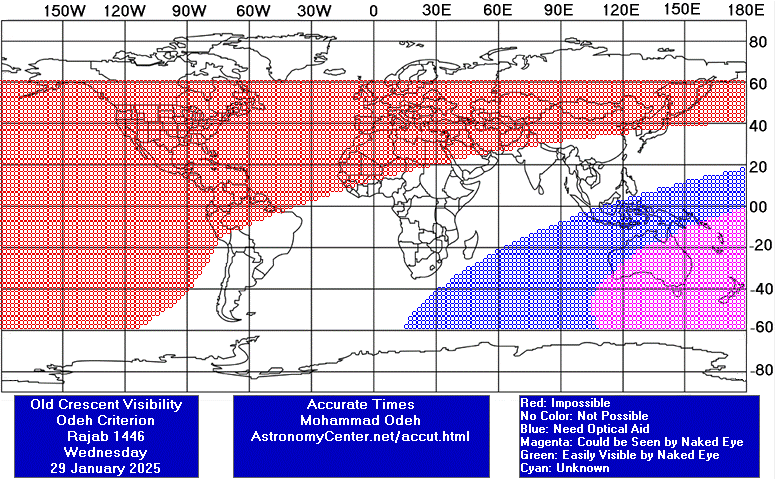
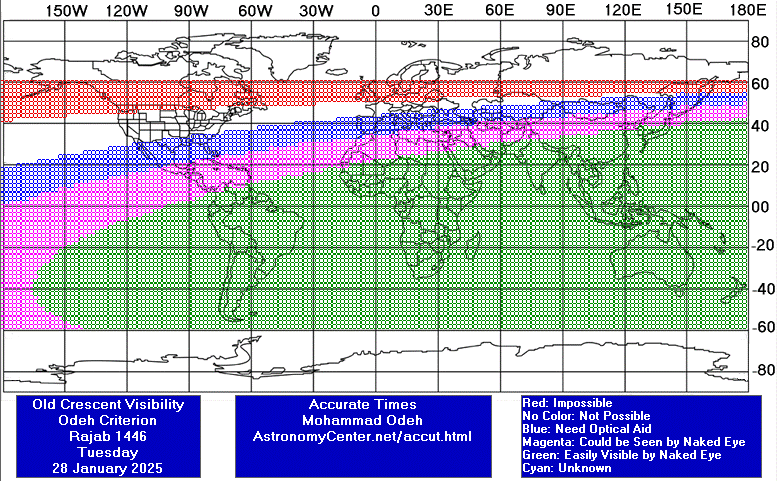
Rajab Waning (OLD) Crescent Observation Results
Tue 28 January 2025
Indonesia
Mr. AR Sugeng Riyadi said: "The sky is very hazy and cloudy on January 29, 2025 from Rowasiya Observatory."
Palestine
Saudi Arabia
Dr. Ayyub Patel said: "Easily visible for over 30min starting at 2 deg altitude until 9deg altitude and then not visible due to sunlight."
Mr. Sami Al-Harbi said: "بعد صلاة فجر هذا اليوم الثلاثاء ٢٨ رجب ١٤٤٦ حاولت رؤية الهلال لكن لم تتم مشاهدته كان فيه بعض الغيوم جهة الشرق اما بالنسبة ليوم الاثنين ٢٧ رجب ١٤٤٦ تمت مشاهدة الهلال لكن ذو حجم ضئيل "
United Arab Emirates
Dr. Belal Alshammaa said: "تمت رؤية هلال نهاية شهر رجب بمساعدة المرقب ثم بالمنظار (8x42) من خلال الغيوم الكثيفة التي كانت تغطي الأفق الجنوب الشرقي وذلك قبل شروق الشمس بحوالي 10-20 دقيقة عندما كان ارتفاع الهلال فوق الأفق حوالي 5-7 درجات"
Wed 29 January 2025
Palestine
Saudi Arabia
Mr. Sami Al-Harbi said: "اجواء المدينة المنورة بين غائمة جزئيا و والسماء ليست صافية وايضا موعد شروق القمر قريب من شروق الشمس لهذا استحالة رؤية هلال اخر شهر رجب ١٤٤٦ هذا والله اعلم "
United Arab Emirates
Eng. Mohammad Odeh said: "AOD is estimated around 0.2"
